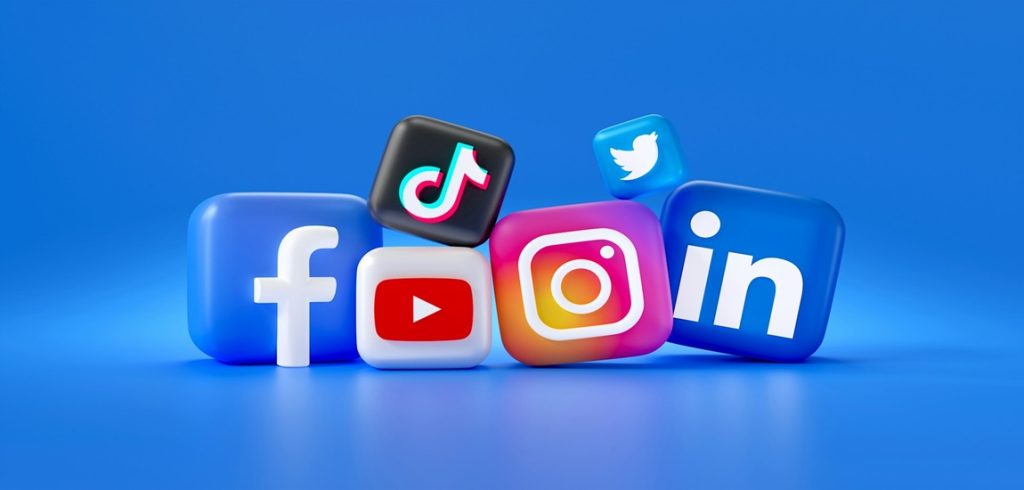
Pic courtesy - Unsplash
Social networking is a must for business founders in today’s hyperconnected digital environment; it is not an alternative. These vibrant platforms present an unmatched chance for new business owners to engage with their audience directly, foster brand loyalty, and spur notable expansion. However, many entrepreneurs may feel overburdened by the amount of information available and the constantly changing landscape of social media, making it difficult to develop a strategy that actually works.
This in-depth piece will break down the crucial phases of social media planning, giving business owners a clear road map for navigating the digital world with assurance and achieving measurable outcomes.
1. Pinpoint Your Audience: The Cornerstone of Engagement
The first step in any successful social media strategy is to carefully identify and comprehend your target demographic before you ever consider creating a single post. Demographics are just one aspect of this. Investigate their psychographics, hobbies, internet habits, problems, goals, and even the language they employ.
How to do it:
- Conduct thorough market research: Utilize tools, surveys, and competitor analysis to gather data.
- Create detailed buyer personas: Give your ideal customers a name, a backstory, and a set of characteristics. What are their daily routines? What websites do they visit? What problems does your product or service solve for them?
- Analyze existing data: If you have an existing customer base, examine their common traits.
- Listen actively: Monitor conversations on social media platforms, forums, and review sites where your potential audience hangs out.
By pinpointing your audience with this level of precision, you can tailor your content, messaging, and even your tone of voice to resonate profoundly with them. This direct resonance is the catalyst for higher engagement, stronger emotional connections, and ultimately, conversions.
Why It Matters
Understanding who you’re targeting allows you to craft content that resonates, speaks to their pain points, and sparks meaningful engagement.
How to Do It
- Research your target demographics (age, gender, location).
- Analyze their interests, values, and online habits.
- Use social listening tools to see what they talk about.
- Create detailed buyer personas to guide your messaging.
Case Study: Glossier
Company: Glossier
Founder: Emily Weiss
When Emily Weiss founded Glossier, she had a clear target market in mind: Gen Z and millennial women who were fed up with the unattainable beauty standards promoted by major cosmetics companies. She was aware of their desire for peer-driven recommendations and genuineness.
Weiss used her blog, Into The Gloss, to create a community before releasing any products. She polled her fans, asked them directly what they desired in skincare products, and gathered information using this platform. Glossier developed cult-favorite products that sold out time and time again thanks to her intimate awareness of her audience’s desires and the excitement generated by social media.
Key Takeaway: Glossier’s audience-first approach turned followers into product co-creators and loyal ambassadors, setting the foundation for a billion-dollar brand.
2. Finalize Content Format: Speaking Their Language
Choosing your communication style is a critical next step after determining who you are speaking to. This entails deciding the content formats to use on all of your social media platforms. More significantly, the content format should directly appeal to the tastes and consumption patterns of your audience in addition to being in perfect harmony with your brand identity.
Consider a diverse mix:
- Videos: Short-form, long-form, tutorials, behind-the-scenes – highly engaging across most platforms.
- Images & Infographics: Visually appealing, easy to digest, and excellent for conveying complex information concisely.
- Blog Posts/Articles: For in-depth insights, thought leadership, and SEO benefits. Snippets can be shared on social.
- Stories & Reels: Ephemeral, authentic, and fantastic for showcasing personality and real-time updates.
- Live Streams: For Q&As, product launches, or interactive sessions.
- Podcasts: If your audience is auditory, snippets or full episodes can be shared.
The key is to experiment and analyze what performs best with your specific audience. Don’t be afraid to repurpose content across different formats to maximize its reach and impact.
Why It Matters
Different audiences prefer different types of content — short videos, memes, infographics, behind-the-scenes photos, or long-form posts. Choosing the right format keeps them engaged and encourages sharing.
How to Do It
- Test various formats (images, Reels, carousels, blogs) to see what resonates.
- Use platform insights to track engagement rates.
- Consider your team’s strengths — do you have video editors, graphic designers, or great writers?
Case Study: Gymshark
Company: Gymshark
Founder: Ben Francis
Ben Francis didn’t have millions of dollars to spend on conventional advertisements when he started Gymshark as a teenager. Rather, he focused more on a content type that appealed to his audience: real, user-generated fitness influencers and exercise videos.
Francis concentrated on YouTube and Instagram, collaborating with up-and-coming fitness influencers who posted videos of themselves working out while sporting Gymshark gear. By showcasing actual users of the items, the visual content style generated viral discussion and social proof.
Key Takeaway: By choosing video content and leveraging influencers, Gymshark built a passionate community that turned a small garage startup into a fitness empire valued at over $1 billion.
3. Proper Channel Configuration: Setting Up for Success
It’s time to select and set up the social media platforms where your target audience is most engaged now that your content plan is taking shape. Avoid the temptation to be everywhere. Dominating a small number of important platforms is significantly more successful than having a weak presence on numerous ones.
Strategic Channel Selection:
- LinkedIn: Ideal for B2B, thought leadership, and professional networking.
- Instagram: Visually driven, strong for lifestyle brands, e-commerce, and community building.
- Facebook: Versatile for broad audiences, community groups, and targeted advertising.
- TikTok: For short-form, trending content, often appealing to younger demographics.
- X (formerly Twitter): Real-time updates, news, direct engagement, and customer service.
- YouTube: For video content, tutorials, and building authority.
Optimization is Key:
- Complete profiles: Fill out every section with relevant information.
- High-quality visuals: Use professional profile pictures, cover photos, and branding elements.
- Optimized bios: Include keywords that describe your business and a clear call to action.
- Consistent branding: Ensure your logo, colors, and overall aesthetic are uniform across all platforms.
A well-configured channel acts as a digital storefront, inviting users to explore and engage further.
Why It Matters
Being on every social network is a recipe for burnout — and it’s rarely effective. Focus on the platforms where your audience actually hangs out.
How to Do It
- Research where your audience spends the most time.
- Optimize your profile with relevant keywords and branding.
- Use a clear profile picture and consistent visuals.
- Fill out bios completely with calls to action and contact info.
Case Study: Canva
Company: Canva
Founders: Melanie Perkins, Cliff Obrecht, Cameron Adams
Canva’s target audience — designers, marketers, and small business owners — love visual inspiration and quick design hacks. Knowing this, Canva prioritized visually rich platforms like Instagram, Pinterest, and YouTube.
They optimized each channel for maximum impact:
- Instagram for engaging carousels and Reels.
- Pinterest for template ideas and mood boards.
- YouTube for tutorials and webinars.
Each profile is branded with Canva’s playful, colorful style, ensuring instant recognition across channels.
Key Takeaway: Canva didn’t spread itself thin — it focused on the channels that fit its visual brand and audience, driving millions of sign-ups through organic and shareable content.
4. Stick to the Topic: Maintaining Brand Cohesion
Posting frequently isn’t the only aspect of consistency; what you post matters much more. It’s crucial to stay true to your brand’s core message and subjects that your audience finds truly interesting. Consider your social media presence to be a coherent story.
Why it matters:
- Brand identity: Helps solidify what your brand stands for.
- Audience expectations: Your followers know what to expect from your content.
- Niche authority: Establishes you as an expert in your field.
Avoid the temptation to chase every trending topic unless it directly aligns with your brand. Straying too far from your niche can confuse your audience, dilute your brand identity, and make it difficult to build a loyal following around a clear purpose.
Why It Matters
Consistency in your topics signals to your audience (and algorithms) what you’re about. When people know what to expect, they’re more likely to follow and engage.
How to Do It
- Define 3–5 content pillars (e.g., tips, behind-the-scenes, user stories).
- Align every post with your brand’s mission.
- Avoid off-brand content that confuses followers.
Case Study: Basecamp
Company: Basecamp
Founders: Jason Fried, David Heinemeier Hansson
The focus of Basecamp, a project management application, is unwaveringly on productive, peaceful work. They post about working remotely, preventing burnout, and creating sustainable enterprises on their corporate blog and Twitter.
They don’t follow fads or viral memes. They have a devoted following of remote teams, managers, and founders that value Basecamp’s unambiguous position as a result of this concentration.
Key Takeaway: By sticking to its message, Basecamp became a thought leader for calm work culture — a message that resonates with millions tired of hustle overload.
5. Be Consistent in Posting: The Rhythm of Engagement
Maintaining a regular publishing schedule is an essential next step after deciding on your platforms and content pillars. Out of sight frequently translates to out of mind in the ever-changing world of social media. Consistently producing high-quality content helps your audience remember and see your brand.
Tools for Consistency:
- Content Calendar: The holy grail of social media planning. Plan your content weeks or even months in advance. Include themes, topics, content formats, and specific publishing dates and times.
- Scheduling Tools: Utilize platforms like Buffer, Hootsuite, Sprout Social, or even native platform schedulers to automate your posting.
Consistency isn’t about spamming your followers; it’s about providing predictable value. Analyze your audience’s active times and tailor your posting schedule accordingly.
Why It Matters
Posting consistently keeps your brand top of mind. It also signals to platforms like Instagram and LinkedIn that you’re an active creator, boosting your reach.
How to Do It
- Use a content calendar to plan posts in advance.
- Repurpose evergreen content to fill gaps.
- Batch-create posts to avoid last-minute scrambles.
Case Study: Buffer
Company: Buffer
Founders: Joel Gascoigne, Leo Widrich
Buffer — a company that literally helps businesses schedule social posts — practices what it preaches. Its social team sticks to a clear posting schedule across Twitter, LinkedIn, and Facebook.
They share blog articles, customer stories, and user tips daily, maintaining a steady stream of value. This consistency not only drives traffic but also showcases Buffer as an authority on social media best practices.
Key Takeaway: Buffer’s disciplined posting schedule has helped it build trust and grow an audience of millions, proving that consistency beats sporadic bursts every time.
6. Be Interactive: Fostering Genuine Connections
Fundamentally, social media is a two-way route for communication. Using it as a broadcast medium is a mistake that many founders make. Engaging with your audience is essential to turning passive followers into devoted supporters and active contributors.
Strategies for Interaction:
- Ask questions: In your posts, stories, and live sessions.
- Run polls and quizzes: Encourages participation and provides valuable insights.
- Respond to comments and messages: Promptly and thoughtfully.
- Host Q&A sessions: Builds trust and addresses audience concerns directly.
- Go Live: Provides an authentic, unscripted connection.
- User-Generated Content (UGC): Encourage your audience to create content featuring your brand and reshare it.
This level of interaction not only builds a loyal following but also provides invaluable real-time insights into your audience’s preferences, pain points, and desires, which can then inform your product development and marketing strategies.
Why It Matters
Algorithms favor posts that spark engagement. Responding to comments and DMs humanizes your brand, turning followers into fans.
How to Do It
- Reply to comments quickly.
- Ask questions in your captions.
- Run polls, Q&As, and live sessions.
- Highlight and repost user-generated content.
Case Study: Wendy’s
Company: Wendy’s (fast food chain)
Wendy’s Twitter account is legendary for its witty, snarky replies to customers and competitors alike. What started as a gamble turned into a social media masterclass — the brand’s playful roasting of rivals like McDonald’s regularly goes viral.
Wendy’s also engages fans with interactive stunts like “#NationalRoastDay,” inviting people to get roasted in the comments.
Key Takeaway: By leaning into humor and constant interaction, Wendy’s transformed a standard corporate account into a beloved social media personality with millions of followers.
7. Stay Away From Bots: Authenticity Over Automation
While some automation tools, such as schedulers, might make managing your social media accounts easier, depending too much on bots to communicate with your audience—such as those that like, follow, or leave generic comments—can backfire. On social media, authenticity is the most valuable asset.
Why avoid bots for engagement:
- Damage to reputation: Users can spot bot activity from a mile away, eroding trust.
- Inauthentic connections: Bots create superficial interactions, not genuine relationships.
- Algorithm penalties: Platforms are increasingly cracking down on bot-like behavior.
- Lack of insight: Bots don’t provide valuable feedback or true engagement metrics.
Invest in human interaction. Your audience wants to connect with the people behind the brand, not with an automated script.
Why It Matters
Authenticity is the currency of social media. Audiences are quick to spot canned replies and fake engagement — and they won’t hesitate to call it out.
How to Do It
- Use automation only for scheduling, not interactions.
- Never buy followers — focus on organic growth.
- Personalize replies and comments.
Case Study: Hootsuite
Company: Hootsuite
Founder: Ryan Holmes
Hootsuite, one of the largest social media management tools, famously promotes authentic social media use. While its platform automates scheduling, it discourages users from relying on bots for engagement.
Hootsuite’s own social team manually responds to questions and feedback. This human-first approach helped them weather storms and maintain trust, even as competitors leaned into shady automation tactics.
Key Takeaway: Automation can scale your workflow, but human interaction builds lasting trust — just ask Hootsuite’s millions of loyal users.
8. Reply to Comments & DMs: The Personal Touch
Because it’s so important but so often ignored, this point merits special attention. Not only is it polite to respond to comments and direct messages (DMs) promptly, but it also sends a strong message that you respect the opinions of your audience and are dedicated to developing a deep connection with them.
Best Practices:
- Timeliness: Aim to respond within a few hours, if not sooner.
- Personalization: Address the person by name and tailor your response.
- Problem-solving: If it’s a customer service inquiry, provide a solution or direct them to the right resource.
- Gratitude: Thank them for their engagement or feedback.
- Keep the conversation going: Ask follow-up questions to encourage further interaction.
Every comment and DM is an opportunity – an opportunity to delight a customer, clarify a doubt, gather feedback, or simply build a stronger human connection. Neglecting these interactions can lead to missed opportunities and a perception of disinterest.
Why It Matters
A prompt reply can turn a casual follower into a lifelong customer. It also shows you care — which is priceless in an age of auto-replies.
How to Do It
- Check notifications daily.
- Set response time goals (e.g., under 24 hours).
- Use your brand voice when replying — be human, not robotic.
Case Study: Warby Parker
Company: Warby Parker
Founders: Neil Blumenthal, Dave Gilboa, Andrew Hunt, Jeffrey Raider
Warby Parker’s customer service is legendary on social media. Their team responds to tweets, Facebook messages, and Instagram DMs within hours — often with personalized recommendations, fun GIFs, or thoughtful solutions.
One viral example: when a customer tweeted about losing their Warby Parker glasses on a trip, the brand overnighted a replacement for free. Stories like this generate organic word-of-mouth marketing worth more than any ad spend.
Key Takeaway: Warby Parker’s responsiveness turns mundane interactions into memorable moments that win customer loyalty.
Bringing It All Together
Building a strong social media presence isn’t about hacks or shortcuts — it’s about putting your audience first, showing up consistently, and building real connections.
By learning from founders like Emily Weiss (Glossier), Ben Francis (Gymshark), Melanie Perkins (Canva), Jason Fried (Basecamp), and other inspiring leaders, you’ll see that the brands that win on social media do the basics better than anyone else.
- They pinpoint their audience.
- They choose the right content format.
- They configure their channels to shine.
- They stick to clear topics.
- They post consistently.
- They interact like real humans.
- They avoid shortcuts like bots.
- And they reply like they care — because they do.
Social media isn’t just about selling — it’s about building a community that believes in your mission and wants to grow with you.
So, as you plan your next post or campaign, remember: your followers are people first. Treat them like VIPs, and your startup’s social media will grow naturally — one genuine interaction at a time.
A Success Blueprint
Social media planning is not a luxury for business founders; rather, it is a vital component of contemporary company expansion. You are establishing the foundation for a strong and effective social media strategy by carefully identifying your target audience, carefully deciding on your content formats, setting up your channels appropriately, sticking to regular posting schedules and topics, encouraging real interaction, avoiding fake bot engagement, and promptly responding to comments and direct messages.
Accept these actions as your guide. Keep in mind that social media is a dynamic environment, so stay flexible, evaluate your performance frequently, and be ready to adjust. Your social media presence will go from being just a digital footprint to a potent tool for community development, brand promotion, and eventually the long-term success of your startup if you take a deliberate and consistent strategy. Now that the digital stage is ready, go tell your story!




More Blogs
Dealing with Competition for Startups: A 5-Step Guide to Thrive
Financial Uncertainty in Business : Navigating the Storm !
Expanding Globally: Need For Spectacular Strategies